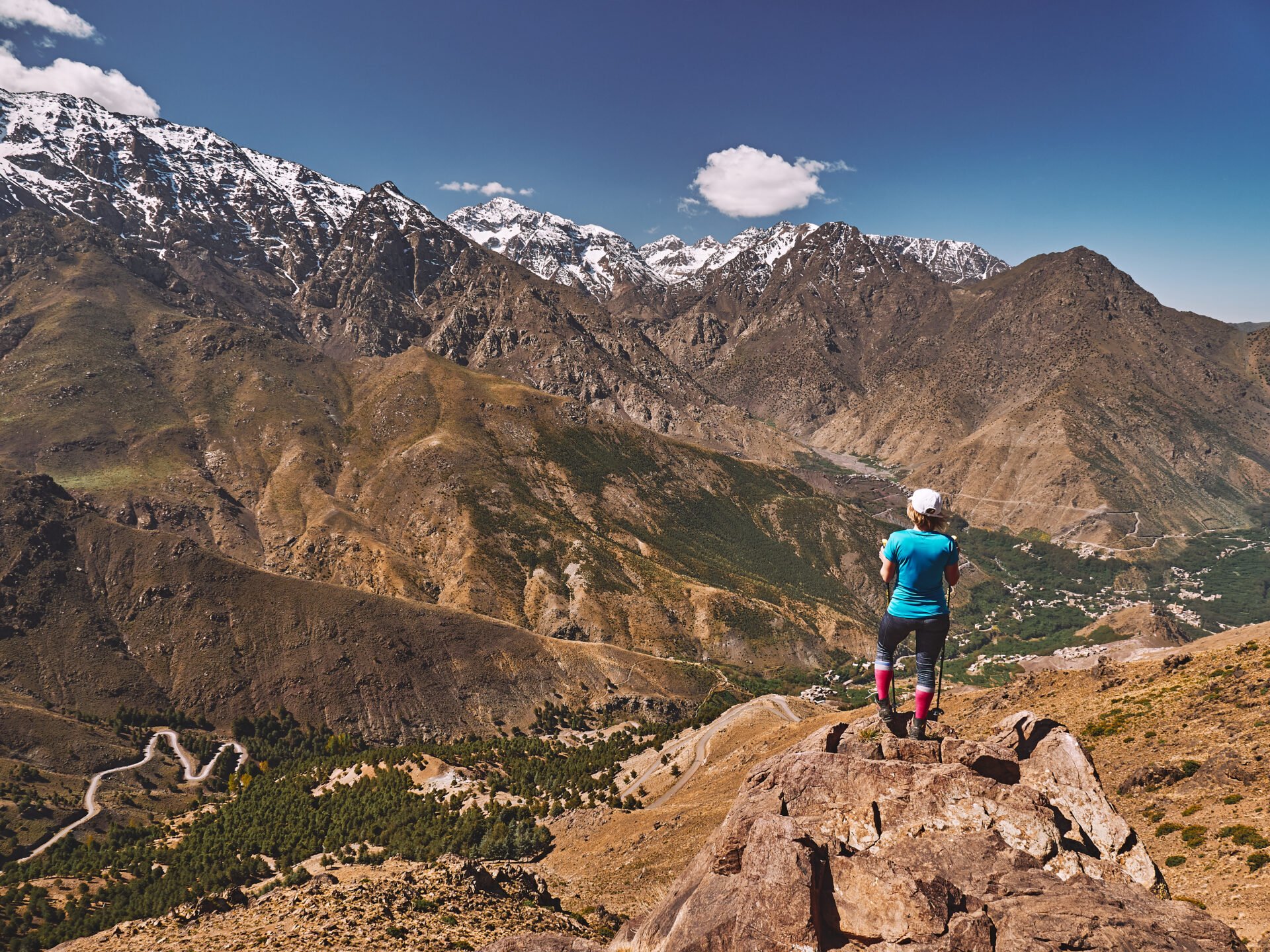Atlas Mountains, Morocco
🏔️ Atlas Mountains, Morocco – Where Adventure Meets Timeless Beauty
Discover the Heart of Morocco’s Wild Soul
Stretching majestically across Morocco, the Atlas Mountains are more than a geographical marvel — they are a living tapestry of Berber heritage, alpine landscapes, and raw, natural wonder. For travelers seeking a journey beyond the medinas and markets, the Atlas range offers a striking contrast to Morocco's deserts and coastlines, revealing a side of the country that's both rugged and deeply authentic.
📍 Where Are the Atlas Mountains?
The Atlas Mountains span over 2,500 kilometers, dividing the Sahara Desert from the lush plains of the Mediterranean and Atlantic coasts. They're divided into three main regions:
-
High Atlas – The most dramatic, home to Morocco’s highest peak, Mount Toubkal (4,167 m).
-
Middle Atlas – Known for cedar forests, waterfalls, and the charming alpine town of Ifrane.
-
Anti-Atlas – A rocky, arid region leading toward the Sahara, rich in Amazigh culture.
🌄 Top Experiences in the Atlas Mountains
🧗 Hike Mount Toubkal (High Atlas)
-
Why Go: At 4,167 meters, it's the highest peak in North Africa.
-
Best For: Experienced hikers and trekkers.
-
Tip: Join a guided trek from Imlil Village for a 2–3 day adventure.
🏞️ Explore the Ourika Valley
-
A lush valley just 1 hour from Marrakech.
-
Ideal for day trips, featuring waterfalls, traditional Berber villages, and riverside cafés.
🏕️ Stay in a Berber Guesthouse
-
Immerse yourself in local culture with an overnight stay in a Kasbah-style riad or eco-lodge.
-
Enjoy authentic Berber cuisine, mint tea, and storytelling by the fire.
🚵♂️ Outdoor Adventures
-
Mountain biking, rock climbing, and paragliding are available in areas like Todra Gorge and Dades Valley.
-
For a slower pace, take a mule trek through scenic villages.
🧭 Cultural Encounters
The Atlas Mountains are home to Morocco’s indigenous Amazigh (Berber) people. With warm hospitality and centuries-old customs, the region offers a rare window into traditional Moroccan life.
-
Visit local souks for handmade rugs, ceramics, and argan oil.
-
Attend seasonal festivals and weekly markets in towns like Asni and Tahanaout.
-
Learn about sustainable farming and community-led tourism initiatives.
🍲 What to Eat
Mountain cuisine is simple, hearty, and delicious:
-
Tagine with lamb or vegetables
-
Taktouka (roasted pepper salad)
-
Amlou (nut butter with argan oil and honey)
-
Fresh bread baked in clay ovens
Pair it all with sweet mint tea — always served with a smile.
📅 Best Time to Visit the Atlas Mountains
| Season | What to Expect |
|---|---|
| Spring (Mar–May) | Wildflowers, snow-capped peaks, perfect for trekking. |
| Summer (Jun–Aug) | Cooler than the cities, ideal for high-altitude adventures. |
| Autumn (Sep–Nov) | Clear skies, fewer tourists, great hiking weather. |
| Winter (Dec–Feb) | Snowy magic in the High Atlas — perfect for skiing in Oukaïmeden. |
📸 Instagram-Worthy Spots
-
Summit of Mount Toubkal
-
Red clay villages clinging to mountain cliffs
-
Aït Bouguemez Valley (known as the “Happy Valley”)
-
Berber tea ceremonies with panoramic views
-
Snow-dusted peaks and sunrise trails
🚗 How to Get There
-
From Marrakech: Most Atlas adventures begin here — less than 2 hours to the foothills.
-
Guided tours and private drivers are widely available.
-
Self-driving is possible, but winding roads require confidence and caution.
🧳 Pro Tips
-
Pack layers – temps vary wildly between day and night.
-
Respect local customs – modest dress is appreciated in villages.
-
Hire local guides – not only safer, but you support the local economy.
-
Learn a few words of Tamazight (Berber language) — it goes a long way.
✨ Final Thoughts
The Atlas Mountains are Morocco’s untamed masterpiece — a place where adventure meets serenity, and where every trail tells a story. Whether you’re chasing summit views or sipping tea in a mountain village, the Atlas promises a travel experience rich in beauty, tradition, and soul.
So lace up your boots, bring your curiosity, and discover the heart of Morocco — one mountain trail at a time. 🌄🇲🇦


